Key takeaways:
- Feedback serves as a crucial tool for growth, helping event organizers to identify strengths and areas for improvement.
- Effective feedback gathering methods include concise post-event surveys, informal discussions, and focus groups for deeper insights.
- Analyzing feedback reveals trends and hidden needs, allowing for adjustments like longer sessions and better audio-visual quality.
- Implementing changes based on feedback fosters engagement and enhances the overall attendee experience, encouraging an ongoing feedback loop.
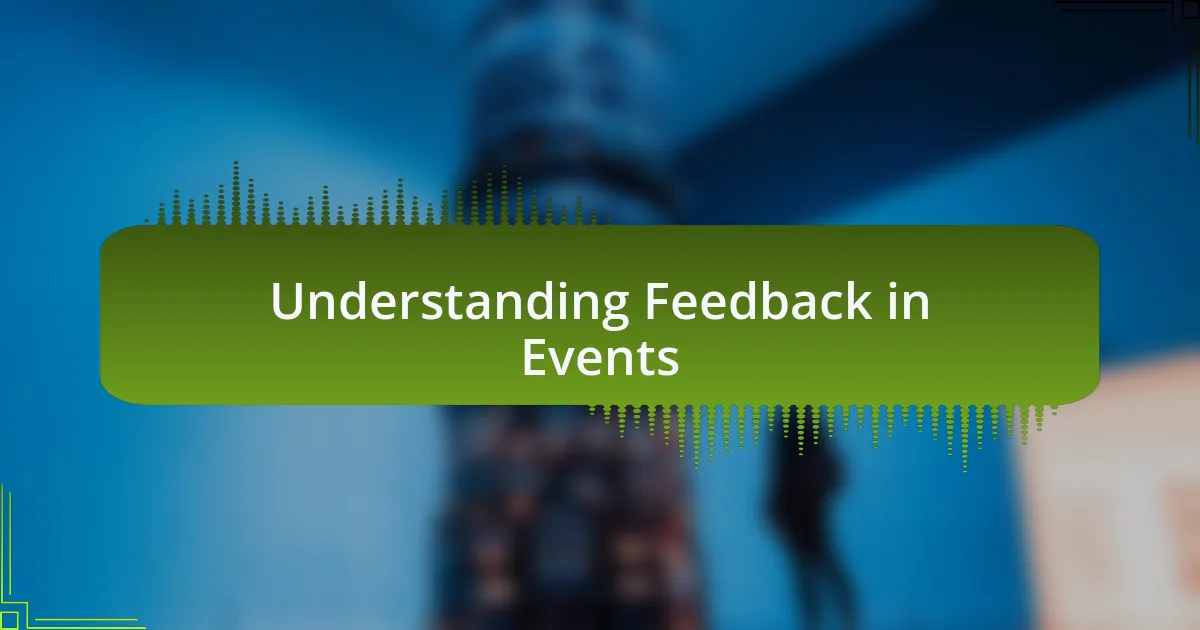
Understanding Feedback in Events
Feedback is a vital part of any event, serving as a mirror that reflects both the successes and areas for improvement. I remember my first large-scale event; we received a mix of praise and criticism. While it stung a bit, I quickly realized that the constructive comments helped me see things from the attendees’ perspective, something that truly enhanced our future planning.
Consider how feedback can highlight aspects of an event you might overlook. For instance, during one particular audiovisual expo, I gathered insights not just on the technical quality but also on the overall experience. Some attendees felt overwhelmed by the lineup, prompting me to better structure schedules in subsequent events. Wouldn’t it be more enjoyable if every participant could navigate the event with ease?
Ultimately, feedback is not just about addressing complaints; it’s a powerful tool for growth. When I started viewing feedback as an opportunity rather than a setback, my approach shifted completely. Instead of being defensive, I started engaging with attendees post-event for their thoughts, which created a more positive atmosphere and fostered community. How can a simple comment on your event lead to meaningful change? In my experience, it always leads to richer experiences for everyone involved.
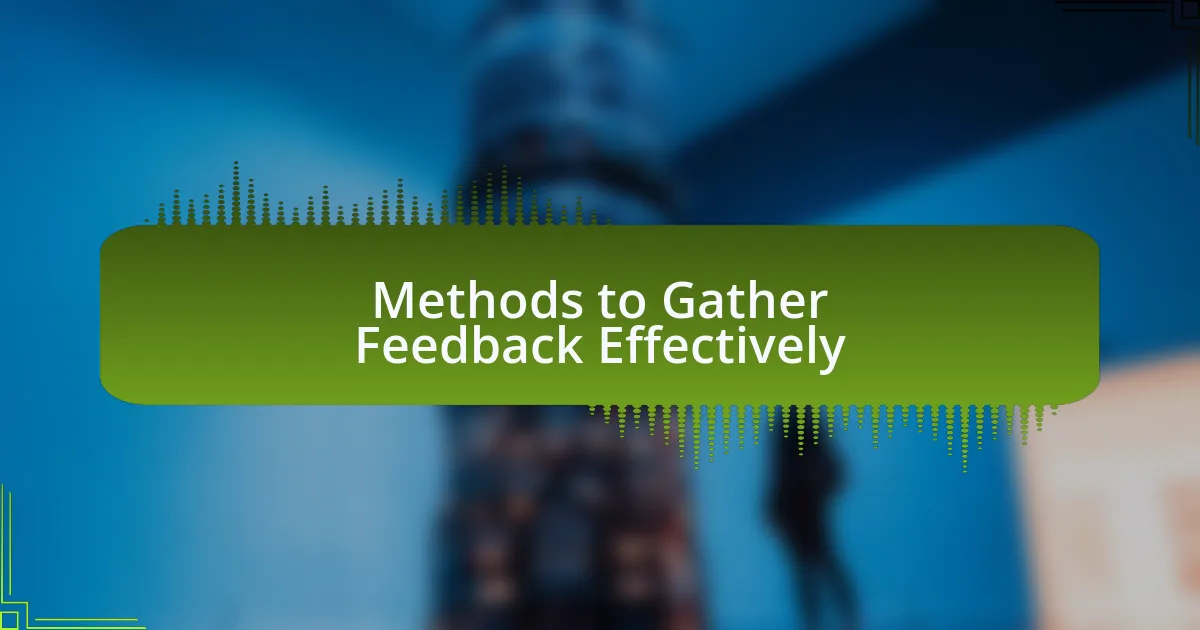
Methods to Gather Feedback Effectively
Gathering feedback effectively requires thoughtful approaches that invite honest responses from participants. One method I’ve found particularly useful is deploying post-event surveys that are concise yet specific. When I first implemented this, I focused on both rating scales and open-ended questions. The balance allowed attendees to express satisfaction numerically and share detailed thoughts, making it easier to pinpoint both strengths and weaknesses.
Incorporating informal discussions during the event can lead to valuable insights as well. I recall a moment when I casually asked a few attendees what they thought about a particular exhibit while grabbing a coffee. Their candid remarks revealed confusion about the layout, which had an immediate impact on my planning for the next expo. Isn’t it fascinating how spontaneous conversations can yield such rich feedback?
Another effective method I’ve employed is creating focus groups after the event. This allows for deeper conversations around specific aspects of the experience that might not be captured fully through surveys alone. During one session, participants unveiled suggestions for improving engagement that I would have never considered otherwise. Have you ever noticed how grouping chats can spark ideas that transform your approach?
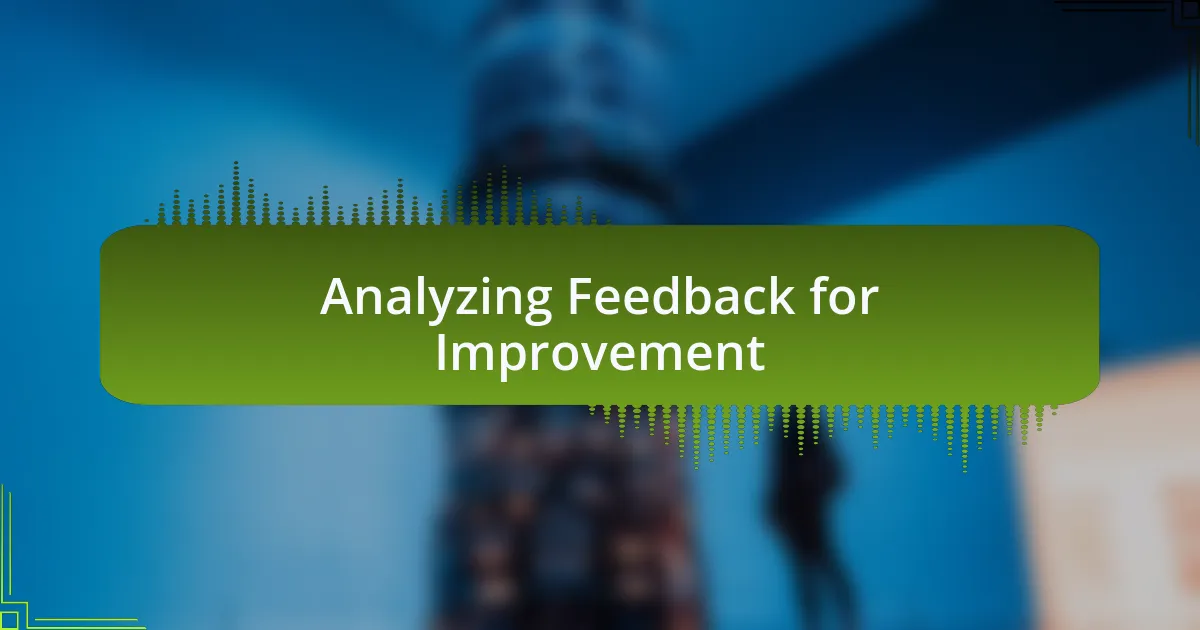
Analyzing Feedback for Improvement
Analyzing feedback involves a careful examination of both quantitative ratings and qualitative comments. When I reviewed feedback from a recent event, I noticed that attendees rated the workshops highly, but their comments revealed a common theme of wanting longer sessions. This disparity highlighted an opportunity for me to adjust the format going forward, showing how diving deeper into comments can unveil hidden needs. Have you ever found a surprising trend in feedback that led to a significant change?
I often take time to categorize the feedback I receive, grouping similar comments to get a clearer picture. During one notable analysis, a cluster of remarks centered around audio-visual clarity in presentations. It struck me that while I had assumed all was well, attendees were experiencing distractions from poor sound quality. Realizing this, I could promptly engage audio specialists to enhance equipment for future expos. Why is it that sometimes we overlook the very details that can dramatically elevate an experience?
Moreover, it’s essential to approach feedback with an open mind, ready to challenge my assumptions. During a reflection session, I encountered a critique that initially felt harsh. Yet, as I unpacked it, I recognized the value in exploring this perspective. It encouraged me to rethink how I manage attendee engagement—this moment truly reinforced the idea that growth often arises from discomfort. Have you embraced critiques that led you to new horizons?
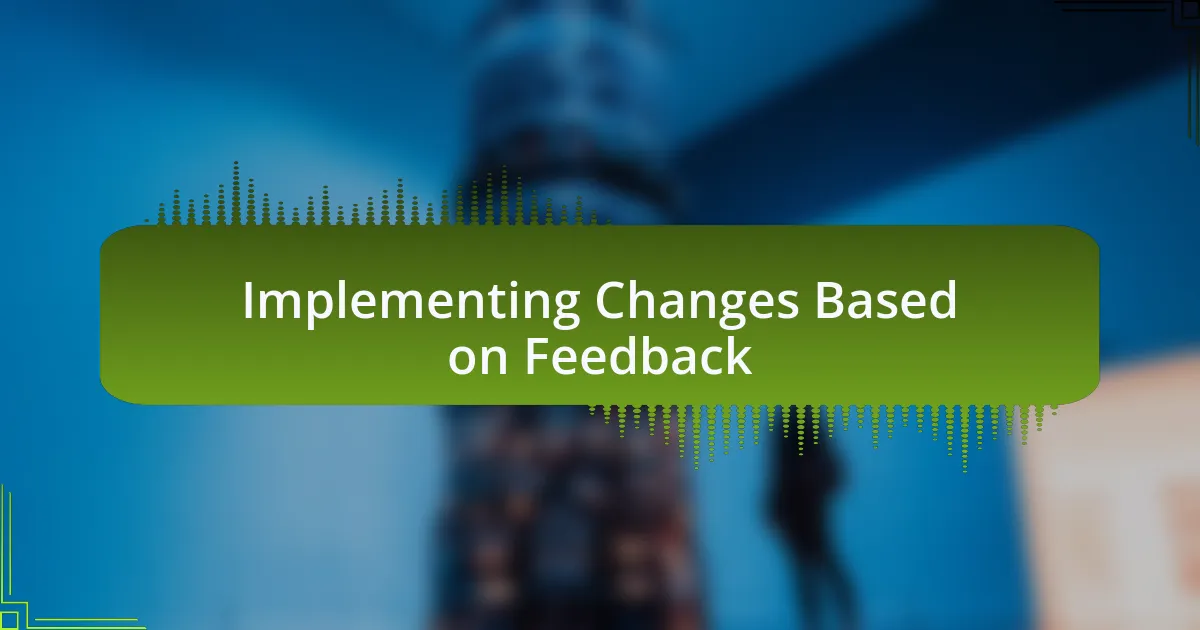
Implementing Changes Based on Feedback
Implementing changes based on feedback is where the magic happens. After receiving numerous requests for longer workshop sessions, I took it upon myself to reconfigure our schedule. I can vividly recall the moment I announced the changes at the next expo; the positive energy in the room was palpable, as attendees expressed genuine excitement about the new format. Doesn’t it feel rewarding when adjustments lead to such enthusiastic responses?
In one instance, feedback indicated that while our presentations were informative, they lacked excitement. I found this unsettling, as I always aimed to inspire. But instead of feeling defensive, I eagerly sought to transform that insight into action. I invited a dynamic speaker to our next event, and the atmosphere shifted dramatically! It’s fascinating how a single element like a speaker’s energy can significantly enhance attendee engagement, isn’t it?
I also found that reaching out to attendees directly after implementing changes can yield unexpected insights. Following the improvements I made based on feedback about audio clarity, I sent out a short survey to gauge the new experiences. The responses were overwhelmingly positive, yet a few attendees pointed out minor issues that I had overlooked. This iterative process taught me that even small-scale adjustments can lead to remarkable enhancements—what steps have you taken to cultivate an ongoing feedback loop?
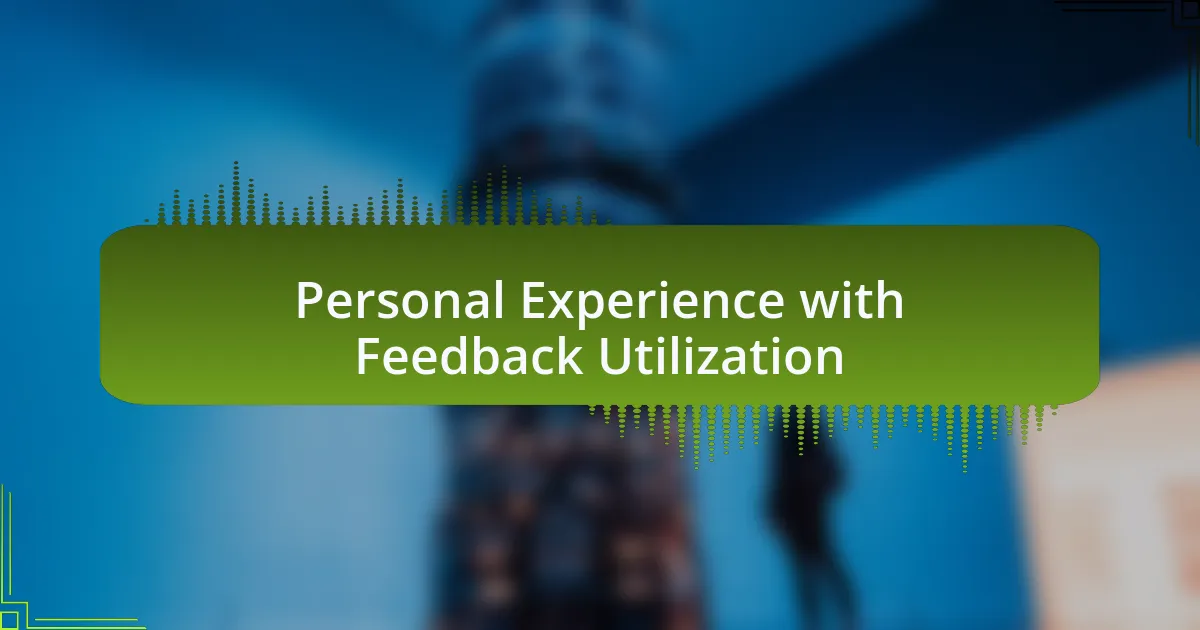
Personal Experience with Feedback Utilization
Feedback has truly been a game changer for me in refining our offerings. I remember attending a workshop where the facilitator asked for criticism right after the session. The raw honesty of the attendees was surprising; they shared everything from pacing issues to content depth. It was both daunting and enlightening, showing me how valuable the audience’s voice can be in shaping future events. Have you ever wondered how a bit of vulnerability can lead to profound improvement?
During one expo, a fellow organizer suggested implementing real-time polls during presentations. Initially, I was hesitant; what if the feedback didn’t align with my vision? However, when we finally tried it, the energy was invigorating. Attendees felt more connected, and their instant feedback led to discussions that would have otherwise gone unnoticed. It’s fascinating how embracing uncertainty can spark such valuable connections, isn’t it?
In my journey, the most striking moment came after we altered our marketing based on participant suggestions. I hesitated at first, worried about straying too far from our established branding. Yet, the response was overwhelmingly positive, with many attendees feeling more engaged and drawn to our content. That experience taught me that listening—truly listening—can open doors to creativity and innovation. Have you experienced a breakthrough simply by embracing feedback?